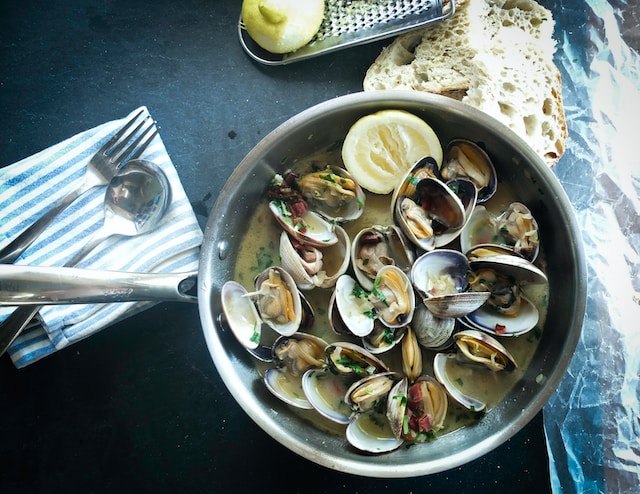
Oceania is a vast region brimming with diverse cultures, breathtaking landscapes, and a rich tapestry of culinary flavors. From the rugged mountains of New Zealand to the palm-fringed islands of Fiji, the foods of Oceania reflect the intricate relationships between land and sea, tradition and innovation. Despite the geographical expansiveness, the cuisines found across Oceania share a common thread – an abundant reliance on locally sourced ingredients, an affinity for bold flavors, and a relentless passion for preserving ancient culinary customs.
In this captivating journey through the foods of Oceania, allow yourself to immerse in a universe where vibrant flavors dance harmoniously on your palate, leaving an indelible impression of the region’s immense gastronomic prowess. Prepare to embark on a tantalizing adventure, one that will introduce you to the extraordinary culinary wonders that define Oceania’s remarkable food heritage.
Polynesian Cuisine
Polynesian cuisine, an integral part of Oceania’s cultural tapestry, is a celebration of the region’s rich history and the amalgamation of diverse influences. This vibrant and diverse cuisine bears the marks of the Polynesians’ seafaring voyages across the South Pacific, where they encountered new ingredients and cooking techniques, blending them with their own traditions.
With its unique blend of indigenous ingredients and culinary traditions from various Polynesian islands, Polynesian cuisine is a feast for the senses. From succulent meats seasoned with aromatic herbs and spices to tropical fruits bursting with sweetness, each dish embodies a harmonious balance of flavors.
Staple Ingredients in Polynesian Cuisine
Taro: Taro, a starchy, root vegetable, is considered the heart of Polynesian cooking. This sacred crop, central to their dietary customs, is used in a myriad of ways. It can be roasted, boiled, or mashed into a rich, creamy paste called poi. Its versatility makes it a staple in many traditional dishes, adding depth and texture to the Polynesian culinary experience.
Fresh Seafood: As inhabitants of the vast Pacific Ocean, it’s no surprise that seafood plays a significant role in Polynesian cuisine. From succulent fish to plump prawns, the Polynesians have honed their skills in catching and preparing these oceanic treasures. Grilled, pan-seared, or marinated in robust spices, seafood in Polynesian cuisine is celebrated for its freshness and delicate flavors.
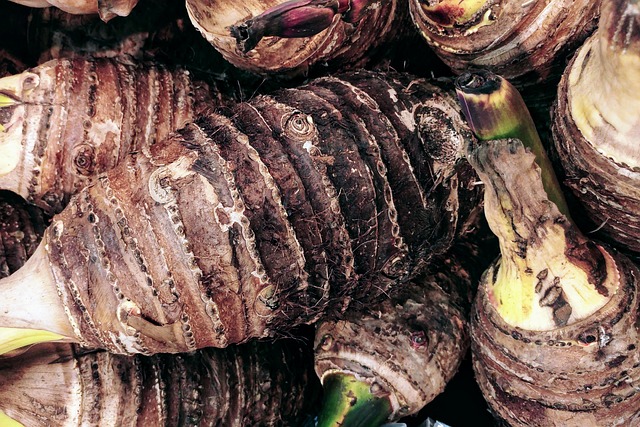
Modern Polynesian cuisine often incorporates indigenous ingredients in creative and unexpected ways. Chefs experiment with ingredients like taro leaves, breadfruit, and native herbs to add a unique touch to their dishes.
These innovative interpretations pay homage to the rich cultural heritage of Polynesia while pushing the boundaries of culinary creativity.
Traditional Polynesian Dishes
- Kālua Pig: One cannot talk about Polynesian cuisine without mentioning the iconic Kālua Pig. This traditional dish showcases the Polynesians’ mastery of open-fire cooking. The pig is marinated in a blend of spices, wrapped in banana leaves, and placed in an imu, an underground oven. Slowly cooked for hours, the result is a tender, smoky meat that melts in your mouth.
- Poisson Cru: Poisson Cru, a popular dish in French Polynesia, is a refreshing blend of raw fish, coconut milk, lime juice, and vibrant vegetables. This vibrant salad is a true reflection of the Polynesian lifestyle, highlighting the reliance on fresh ingredients and the simplicity of preparation. The raw fish is marinated in tangy citrus juices, allowing the flavors to meld together, creating a harmonious symphony of taste.
Melanesian Cuisine
Nestled in the heart of Oceania, the islands of Melanesia are home to a stunning array of cultures, landscapes, and, of course, mouthwatering culinary delights.
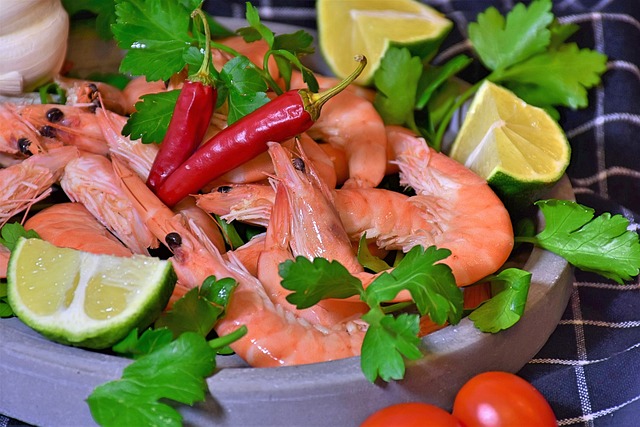
Melanesian cuisine, with its robust flavors and extraordinary use of native ingredients, is a feast for both the senses and the soul. From Papua New Guinea to Vanuatu, the diverse cultures of Melanesia have shaped the cuisine into a harmonious symphony of island flavors.
Indigenous Ingredients
Root vegetables, with their earthy and comforting flavors, form the backbone of Melanesian cuisine. Taro, yam, and sweet potato are staples that are present in various forms in many traditional dishes. These versatile ingredients are roasted, boiled, or mashed, creating hearty and satisfying meals. From creamy taro soups to smoky yam fries, the creativity and versatility of these root vegetables are showcased in the diverse cuisines across Melanesia.
Coconut is an essential ingredient that infuses Melanesian cuisine with its characteristic tropical flair. Whether it’s coconut milk, flesh, or oil, this versatile fruit is used in a myriad of ways. From rich and creamy curries to refreshing coconut-infused beverages, the unique flavor and texture of coconut add a delightful depth to Melanesian dishes. The coconut tree, often referred to as the “tree of life,” holds immense significance in Melanesian culture and is revered for its nourishing properties.
Traditional Melanesian Dishes
- Lap Lap: Considered a culinary masterpiece in Melanesia, Lap Lap is a traditional dish that exemplifies the flavors and techniques of the region. Made from grated root vegetables, meat or fish, and coconut milk, Lap Lap is wrapped in banana leaves and cooked in an earth oven. The result is a tender and aromatic dish that showcases the skillful use of indigenous ingredients.
- Kokoda: Hailing from the beautiful country of Fiji, Kokoda is a refreshing and vibrant dish perfect for tropical climates. It features raw fish, typically mahi-mahi or tuna, marinated in lime juice and coconut milk. The acidity of the lime “cooks” the fish, resulting in a delightful ceviche-style dish. Kokoda is often accompanied by fresh vegetables like tomatoes, onions, and herbs, showcasing the abundance of bounty available in Melanesia.
In recent years, Melanesian cuisine has undergone a culinary renaissance, with chefs infusing traditional dishes with innovative flavors and techniques. Drawing inspiration from global culinary trends, the boundaries of Melanesian cuisine have expanded, resulting in a fusion of flavors that intrigues the palate. From Asian-inspired curries to Pacific-infused seafood dishes, the new frontier of Melanesian cuisine embraces diversity while keeping its cultural roots intact.
Contemporary Melanesian chefs are showcasing a renewed interest in reviving and elevating indigenous ingredients that have long been overlooked. From wild edible greens like ferns and watercress to unique herbs and spices, these chefs are championing the abundance of native flora in their creations. With their commitment to sustainability and preserving traditional practices, these culinary visionaries are not only creating unforgettable dishes but also serving as custodians of Melanesian food heritage.
Micronesian Cuisine
Nestled in the enchanting islands of Micronesia, a region known for its pristine turquoise waters and idyllic landscapes, lies a vibrant culinary scene that is as diverse as the cultures it represents. Micronesian cuisine is a tapestry of flavors, a harmonious blend of indigenous ingredients and influences from neighboring Asian and Pacific communities.
Coconut, often referred to as the “tree of life” in Micronesia, holds a special place in the hearts and palates of the locals. Its sweet, nutty flavor and creamy texture are a cornerstone of many dishes. Whether it’s in the form of coconut milk, grated flesh, or oil, this versatile ingredient finds its way into savory stews, refreshing salads, and decadent desserts.
Micronesians have a deep-rooted connection to the sea, and their cuisine reflects this bond. Fresh seafood, harvested sustainably from the surrounding azure waters, takes center stage in many traditional Micronesian dishes. From succulent fish grilled over open flames to plump shrimp simmered in aromatic herbs and spices, the flavors of the ocean are celebrated with every bite.
Staple Ingredients in Micronesian Cuisine
Taro, a beloved root vegetable, is a staple in Micronesian cuisine. Boiled, roasted, or mashed, taro lends its earthy flavor and velvety texture to comforting stews and hearty side dishes. With its rich cultural significance and versatility, taro is not just a vegetable but an essential part of the Micronesian culinary experience.
Sweet potato, another beloved ingredient, is a vibrant and comforting addition to Micronesian dishes.
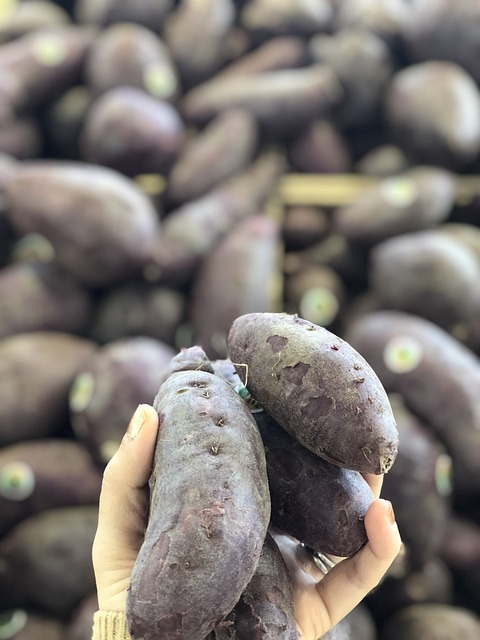
From purple-tinged fries to creamy sweet potato pies, this versatile root vegetable adds a touch of sweetness and a burst of color to the plate.
Each island in Micronesia has its own unique culinary traditions and signature dishes. From Chuuk’s famous “rakau” – a coconut crab dish infused with local spices – to the piquant “kelaguen” of Guam, a tangy salad made with marinated seafood or grilled meat, these traditional dishes offer a glimpse into the rich cultural heritage of the region.
Embracing Fusion and Innovation
In recent years, Micronesian cuisine has also seen a wave of culinary innovation, with chefs blending traditional flavors with contemporary techniques. They draw inspiration from global culinary trends, resulting in a fusion of flavors that excite the taste buds. This modern approach allows for experimentation with novel ingredients, creative presentations, and unexpected flavor combinations.
At the heart of Micronesian cuisine is a deep respect for traditional practices and a commitment to preserving cultural heritage. Micronesian chefs are often custodians of generational knowledge, passing down cooking techniques and recipes from one generation to the next. Through their dedication, these culinary visionaries ensure that the flavors and traditions of Micronesia are carried forward, allowing locals and visitors alike to experience the true essence of this captivating region.
Indigenous Ingredients of Oceania
The enchanting lands of Oceania are blessed with an abundance of indigenous ingredients, each offering unique flavors and textures that form the backbone of this remarkable region’s cuisine. From ancient root vegetables to exotic fruits and aromatic herbs, Oceania’s culinary landscape is a treasure trove waiting to be discovered.
Root Vegetables:
Oceania is home to a myriad of root vegetables that have sustained its people for generations. Taro, with its creamy, slightly nutty flavor, takes center stage in many traditional dishes. Whether boiled, roasted, or transformed into the velvety paste known as poi, taro adds a comforting and earthy element to Oceania’s culinary repertoire. Alongside taro, other root vegetables like yam and sweet potato play prominent roles in Oceania’s cuisines, offering their own unique flavors and versatility.
Seafood and Seaweed:
As inhabitants of the vast Pacific Ocean, the people of Oceania have long relied on the ocean’s bountiful resources for sustenance. From succulent fish like tuna, snapper, and barramundi to plump prawns and sweet crab meat, Oceania’s seafood is celebrated for its freshness and quality. Seaweeds, such as nori and wakame, are also integral to Oceania’s cuisine, with their briny flavors adding a unique touch to dishes like sushi and seafood salads.
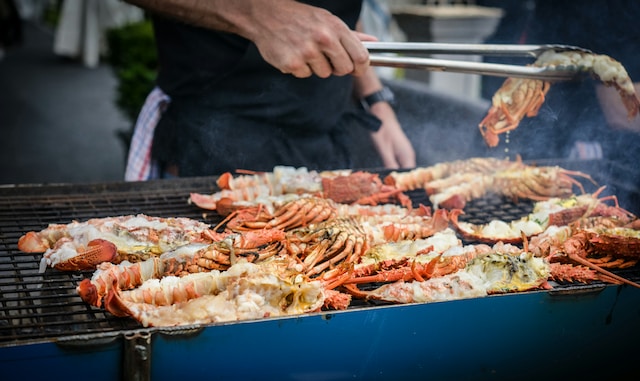
Exotic Fruits:
Fruits in Oceania are a treasure trove of vibrant flavors, bursting with sweetness and tropical flair. From the succulent mangoes of Australia to the tangy passion fruits of Tahiti, each fruit tells a story of the region’s bountiful landscapes. The juicy pineapples of Hawaii, with their golden flesh and refreshing taste, add a tropical touch to both savory and sweet dishes. Papaya, with its vibrant orange flesh, is a versatile ingredient that brings a hint of sweetness to salsas, salads, and desserts.
Aromatic Herbs and Spices:
The aromatic herbs and spices found in Oceania’s cuisines are a testament to the region’s diverse cultural influences. From the fiery heat of the chilies used in Polynesian cuisine to the fragrant allure of lemongrass in Micronesian dishes, these flavor enhancers add depth and complexity to the vibrant flavors of Oceania. Kaffir lime leaves, with their distinct citrusy aroma, are often used to infuse curries and soups with their exotic essence. The floral notes of fresh ginger and turmeric bring warmth and balance to many traditional dishes, while the pungent garlic and shallots add layers of savory goodness.
Preserving Culture Through Cuisine:
In Oceania, the culinary traditions are more than just recipes; they are a testament to the enduring spirit of the region’s people. Through the use of indigenous ingredients and the preservation of traditional cooking techniques, Oceania’s cuisines serve as cultural ambassadors, showcasing the rich and diverse heritage of its people. The reverence for these ingredients and the commitment to sustainable practices ensure that Oceania’s culinary legacy will continue to thrive for generations to come.
